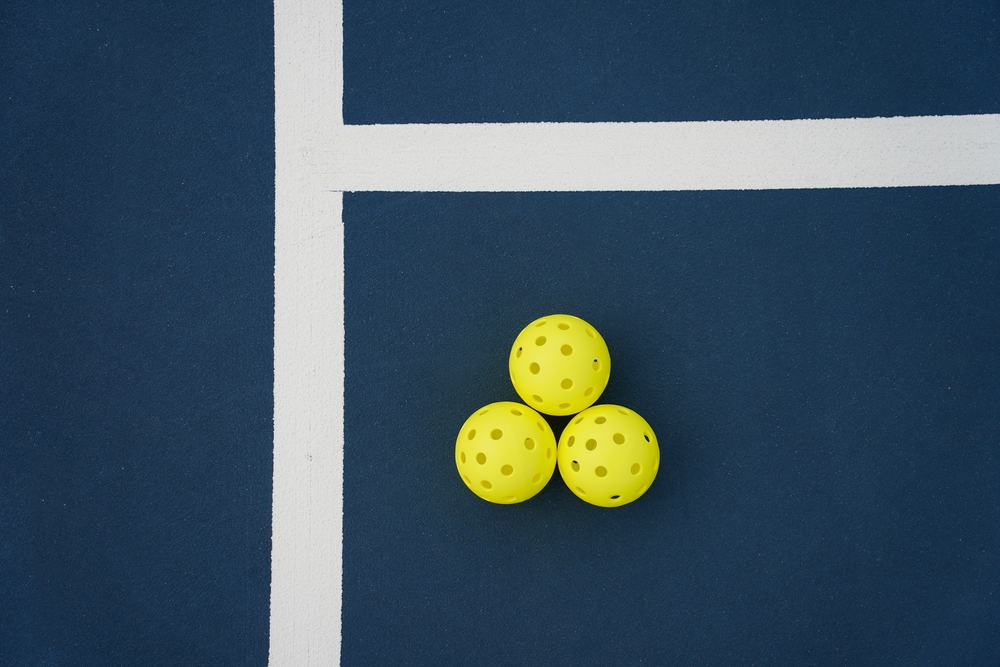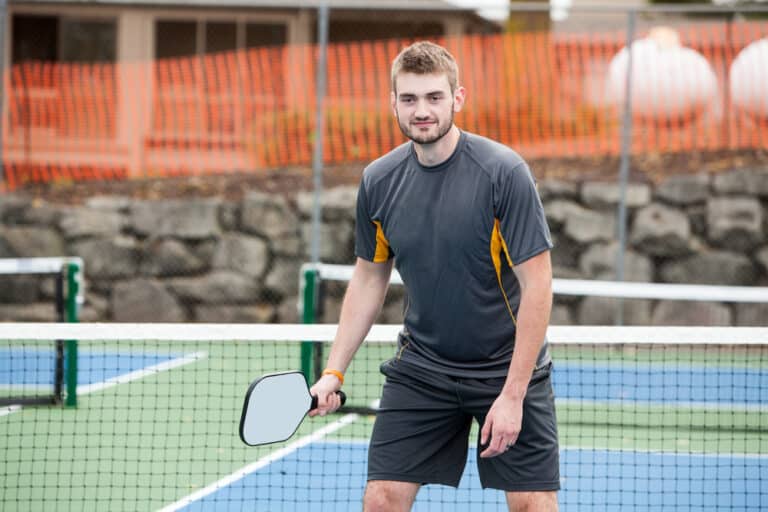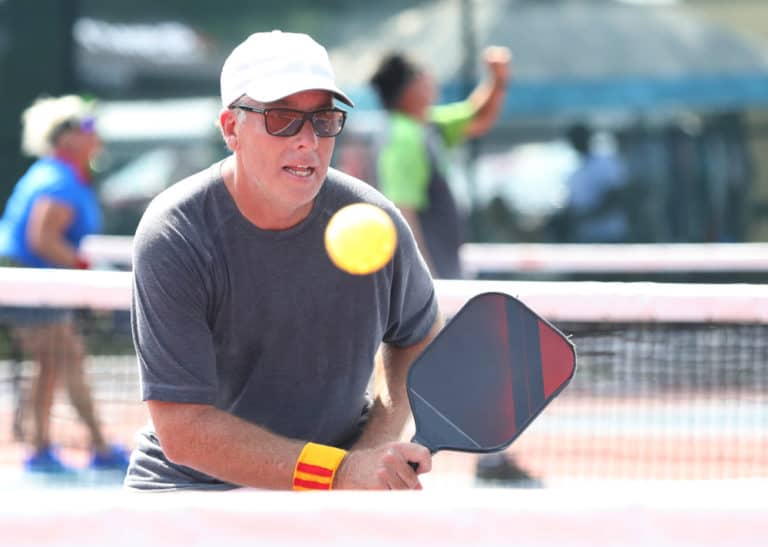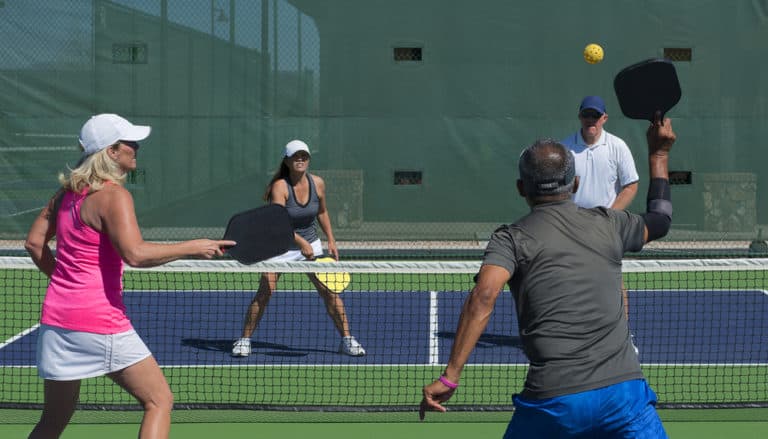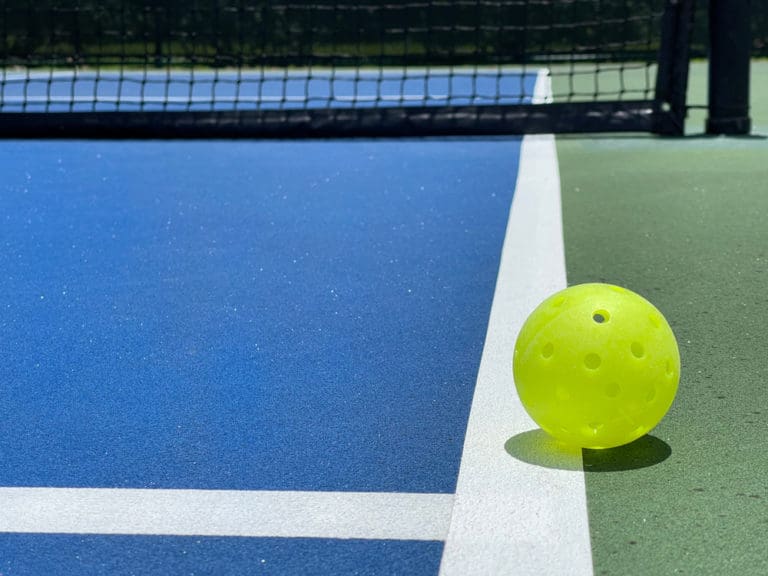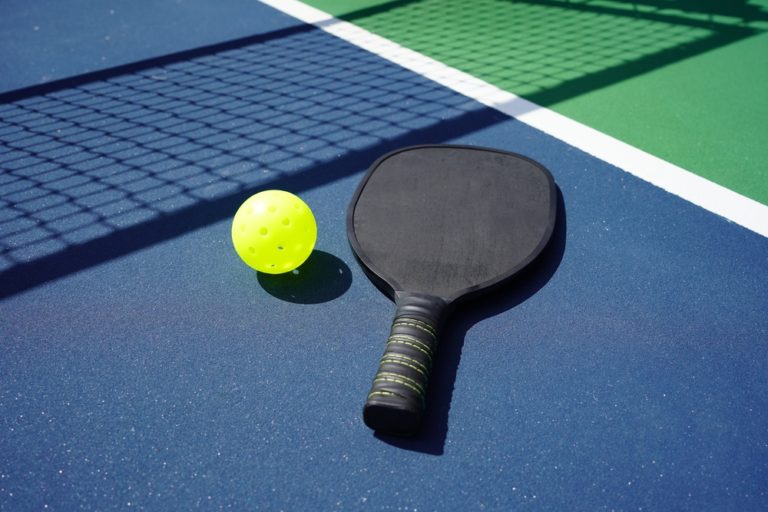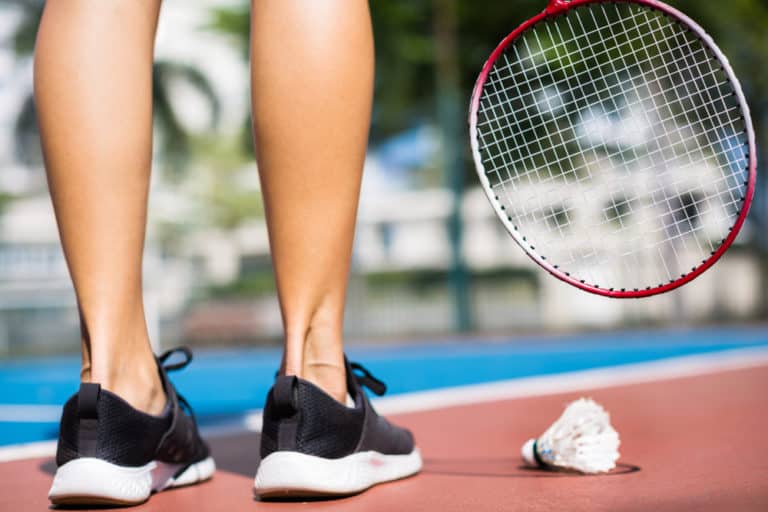Why Do Outdoor Pickleballs Have Smaller Holes?
Outdoor pickleballs are slightly different in design than indoor pickle balls, yet you can use any type to play outside or inside. I once made a mistake packing an indoor pickleball for an outdoor pickleball match, and I still get teased about it. Something about bringing a ping pong ball to a gunfight. Let me explain why outdoor pickleballs have smaller holes.
Outdoor pickleballs have smaller holes that enhance aerodynamic performance when used in windy outdoor conditions. The smaller holes, paired with more durable plastic, ensure that the ball follows the most accurate flight path. Smaller holes also decrease the ball’s resistance to wind.
Did you know that some outdoor pickleball manufacturers use aerospace engineers to help create the most aerodynamic balls with the best flight patterns? Some manufacturers play around with different sized and spaced holes. Others stick to the same size and employ a symmetrical pattern.
Why Do Outdoor Pickleballs Have Smaller Holes?
According to USA Pickleball Rulebook 2022 under section 2.D, page 6, all pickleballs “shall have a minimum of 26 to a maximum of 40 circular holes, with spacing of the holes and overall design of the ball conforming to flight characteristics.”
“The ball shall be made of a durable material molded with a smooth surface and free of texturing. The ball may have a slight ridge at the seam, as long as it does not significantly impact the ball’s flight characteristics.”
Indoor pickleballs normally have larger holes than outdoor pickleballs and are designed with 26 holes compared to the 40 holes found in outdoor pickleballs.
The rule book mentions “flight characteristics” a few times, and that’s an area where the smaller, extra holes play a major role.
Why Are Outdoor Pickleballs Designed with Smaller Holes?
By making the holes smaller than the holes found in indoor pickleballs, outdoor pickleball manufacturers can fit more holes in the ball. These smaller, extra holes deliver exceptional aerodynamic performance in the outdoor pickleball.
Paired with heavier plastic, allow for a higher bounce. The smaller holes and the heavier durable plastic create a more accurate flight path.
The smaller holed outdoor pickleball reduces the wind resistance, allowing for harder-hitting, resulting in a much faster game. Small holes allow for sufficient airflow, which helps it to remain less affected by the wind.
My point is that through “True Flight Technology” testing, it was found that smaller holes in a pickleball perform better aerodynamically in typical outside conditions than pickleballs with fewer and bigger holes.
When playing outdoor pickleball, you are exposed to the elements. The wind is your biggest enemy, with the sun coming in at a close second.
The average outdoor pickleball is created with the following design characteristics:
- True Flight Technology
- Smooth And Hard Plastic
- Weight +- 0.9 Ounces
- Higher Bounce
- 40 Holes
Are The Holes Of An Outdoor Pickleball All The Same Size?
When the top pickleball manufacturers produce balls for the pickleball industry, they do a lot of testing to ensure that the outdoor balls perform at their optimal level, especially in challenging conditions.
Some pickleball manufacturers will keep the holes the same size and insert them symmetrically, while some suppliers will opt for a variety in hole sizes. Most outdoor pickleballs have 40 holes.
Take one of the best-known outdoor pickleballs – Dura Fast 40 – used in many professional tournaments and loved by pro pickleball players worldwide. The balls have a patented mixture of 16 larger and 24 smaller-sized holes.
The idea behind the different-sized holes is that it helps with the ball’s flight on days that the wind wants to spoil for you. The Dura Fast 40, previously known as the Dura 56, was designed by an aerospace engineer tasked to create the best possible flight pattern.
The Main Differences Between Outdoor And Indoor Pickleballs
One of the main differences between outdoor and indoor pickleballs is the size and the number of holes found in each type. There are other differences in each design that make it suitable to play in a specific environment.
Let’s discuss some of the main differences between the two:
Plastic Type
Outdoor pickleballs are made out of smooth, hard plastic that ensures that it lasts longer when used in testing elements and on the more abrasive outdoor courts. Outdoor pickleballs need to be replaced more often due to exposure to the elements and the rougher playing surface.
Indoor pickleballs are engineered for the still air conditions found indoors and are made out of a softer and lighter plastic. Indoor pickleballs last longer than outdoor pickleballs due to playing on a more forgiving surface.
Weight Of The Ball
Outdoor pickleballs are heavier than their indoor counterparts, usually weighing 0.88 – 0.93 ounces. The extra weight of the average outdoor pickleball makes it faster through the air, so you can expect less response time when playing with an outdoor pickleball.
Indoor pickleballs are lighter than their outdoor counterparts, usually weighing 0.78 – 0.85 ounces. On the other hand, the lighter indoor pickleball makes for slower movement through the air, so don’t fear being hit by an indoor pickleball. It won’t hurt at all.
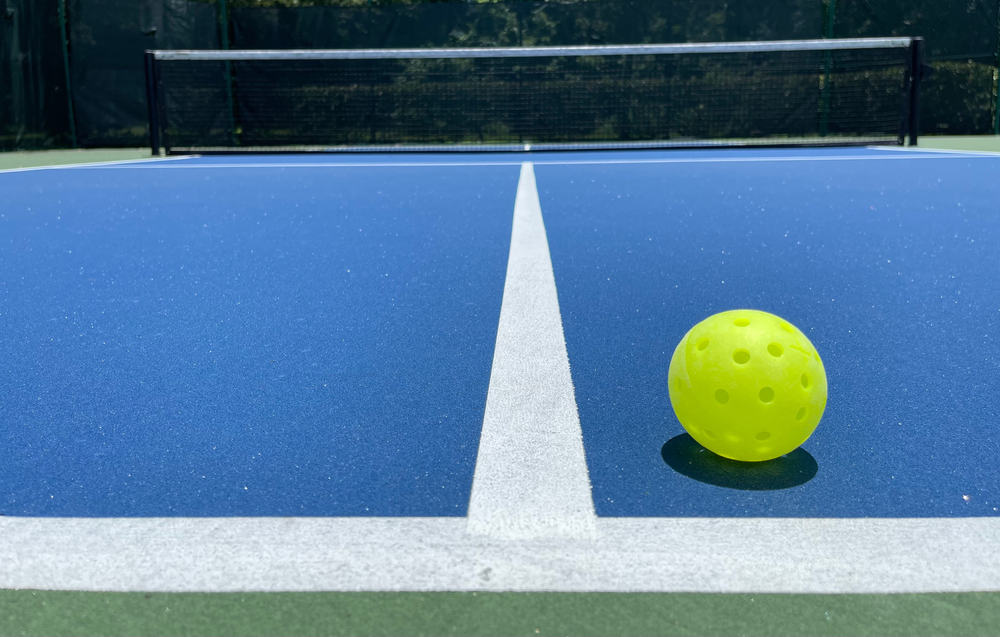
Control Of The Ball
Outdoor pickleballs tend to be faster due to their weight and smaller holes and are harder to control as it pops off the bat. Your reactions also need to be faster, and control can be lacking due to less response time.
Indoor pickleballs are lighter, softer, and a little less bouncy – characteristics that allow for a little more control from your side, as the ball is not as fast through the air and doesn’t smack the paddle in the way that an outdoor pickleball does.
Often, you will find more texture on an indoor pickleball, which allows for more spin, and more accurate serves.
Best Outdoor Pickleballs
I thought it a good idea to guide you to some of the most highly-rated outdoor pickleballs found on the market today. When playing outdoor pickleball, it’s always best to play with the best balls because a perfect day can quickly turn into a windy one, especially if you stay in California.
- Dura Fast 40
- Onix Pure 2
- Franklin X-40
- TOP Outdoor Pickleball
- Penn 40
- CORE Outdoor Pickleball
Conclusion
The size and number of holes found in outdoor pickleballs for part of the “True Flight Technology” that most pickleball manufacturers use to ensure that their balls perform at optimal levels when used outside in the elements.
Outdoor pickleballs have smaller holes to be less wind resistant and help the outdoor pickleball be as aerodynamic as possible, ensuring a more accurate flight path. Smaller holes are needed to create sufficient airflow so that the outdoor pickleball will be less affected by wind.

